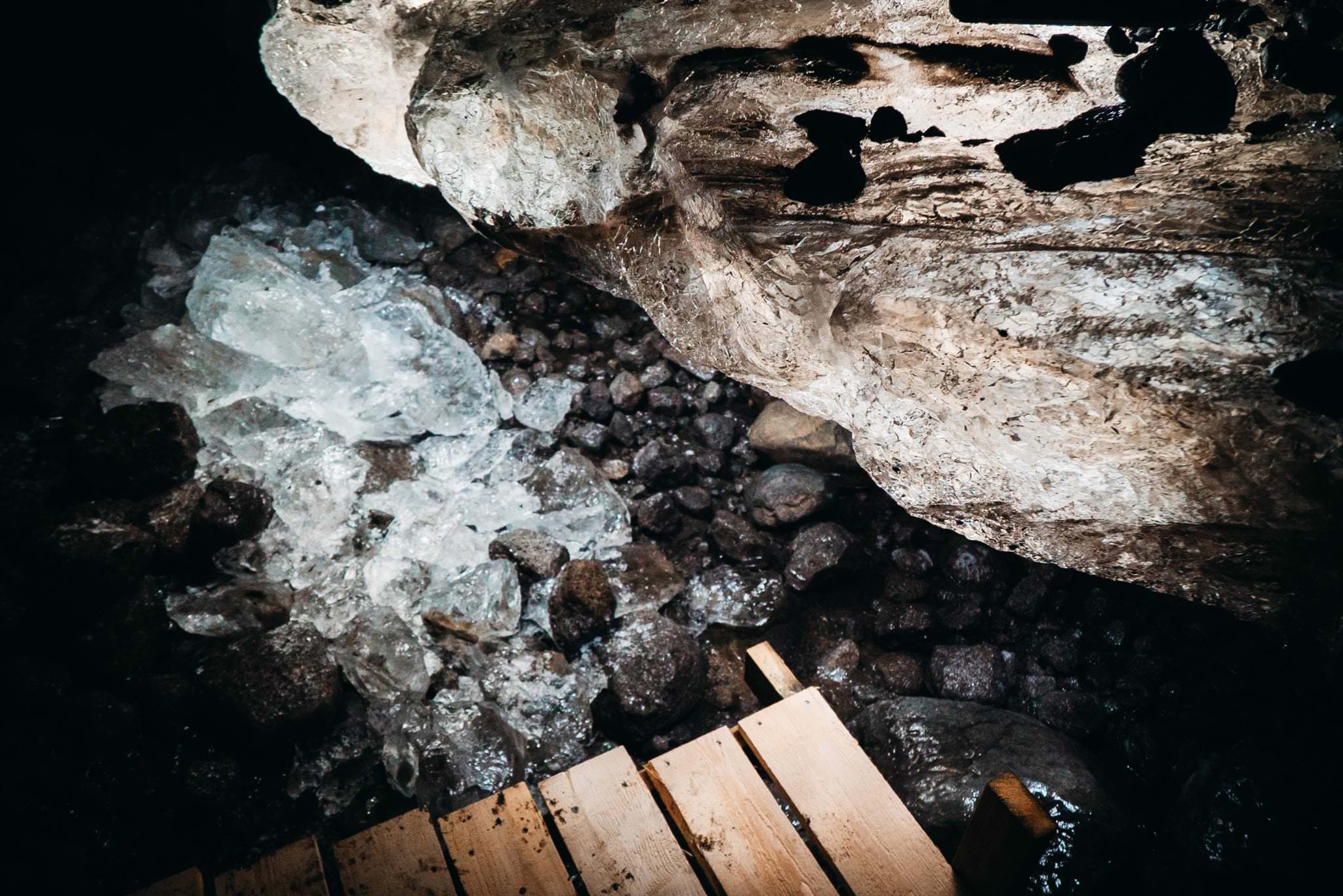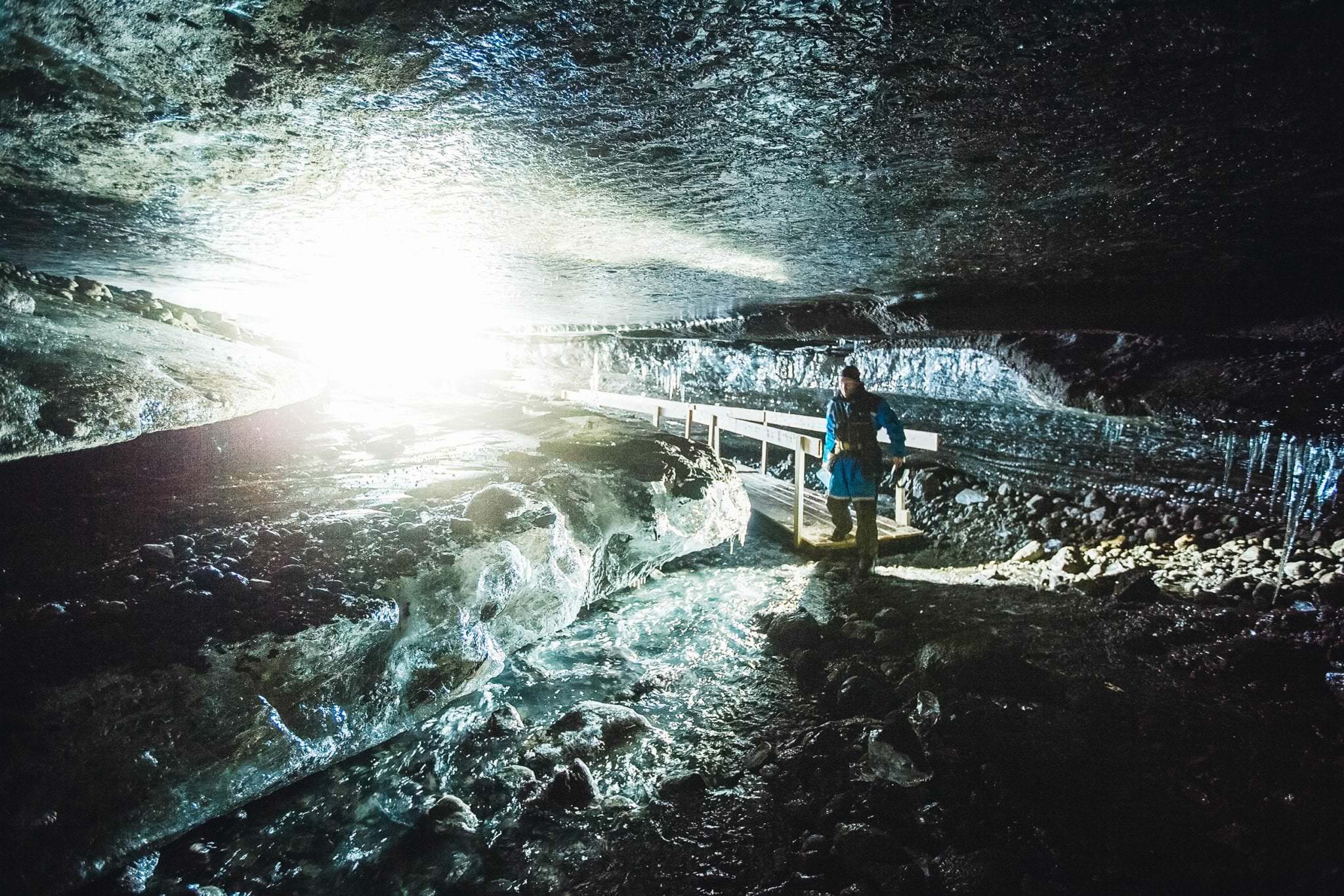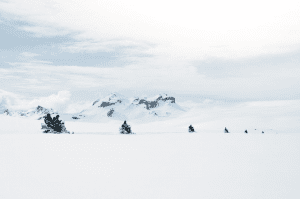As our guides want to know every corner and crevice of the glacial area, they conduct regular surveys of the glacier. During one of those early winter routine check-ups, our team discovered a glacier water pipe leading into the ice, which they then followed far under the glacier. We realized right away that this was not just some ordinary waterpipe; it was a sturdy and safe tunnel that would freeze over in a few weeks and become a massively impressive ice cave!
All we needed to do was secure the opening into the ice cave to make it accessible all winter long… “No Problemo”. After marking the cave, we waited for it to freeze over and checked on a daily basis to witness its formation and after a few weeks, we were able to get to work. We bought an excavator and a special drill so that we could rid ourselves of rocks and create a secure pathway to enter and explore this natural wonder.
Nature forms amazing attractions: The Ice Caves of Iceland Mesmerize with Their Beauty
Glaciers shine in various shades of white and light blue, with a twist of ash grey stripes on them form an essential part of the Icelandic landscape. Approximately 15% of Iceland’s surface is covered with glaciers. The biggest glaciers in Iceland are Vatnajökull, Langjökull, and Hofsjökull. A glacier is born when snow stacks up into thick layers throughout the years, meanwhile, not melting away. All glacial ice starts as snow. Due to the weight of the upper layers, the snow first transforms into compact firn-snow and eventually into thick ice. Hard pressure squeezes the air through the ice crystals and compresses their size. The ice crystals can be up to tens of centimeters of length. The constant downwards oriented movement and pressure is making the ice very clear. Glacial caves can be found in the Icelandic glaciers.

There are two types of ice caves: regular ice caves and glacial ice caves. Regular ice caves are often described as natural rock formation caves which are coated with frozen water, like icicles and waterfalls of ice. The ice inside the regular ice caves is mainly of white color. The regular ice cave is not a common type of ice cave in Iceland as Iceland is mainly famous for its glacial caves. The glacial ice caves are formed with the melting of the surface of the glacier and the water percolating through crevasse channels to the bottom of the ice helping to create such cave conditions. Air temperature or geothermal activity from volcanic vents or hot springs beneath the ice can also induce the meltwater forming glacial ice caves. As the meltwater flows through the ice, it can form holes and tunnels into the glacier. When the temperature goes low and the cold season starts, the water left behind in the caves and tunnels freeze thus making them stable and safe to visit. On top of the earth, the ultraviolet rays from the sun change the color of the ice into white but inside the glacial ice caves, the color of the ice can be described being amazingly blue, turquoise and crystal clear. Inside the ice, the absorption of red light can be six times higher than the blue spectrum. The deeper the light travels in the ice, the more red light will disappear during the way. Glacial ice can be even thousands of meters thick so the light can travel a long way through the ice and its body. The lack of reflection of the red waves is the reason why the glacier ice seems blue to the eye.

The placement, size, and form of the ice caves can vary from year to year. The ice caves are dynamic and vibrant, some of them are mesmerizingly beautiful, some to be fair not as attractive. Each one of the glacier caves is unique due to their size, light conditions and their texture of the ice. The experience of visiting an ice cave is yet always very unique, thus the ice caves are often referred to as one of the world´s miracles. As the glaciers move, it might be possible that a collapsed glacier ice cave might never appear again and is hence one of a kind. In Iceland, you can find both natural and man-made ice caves. The man-made are carved inside a glacier using machinery so this makes them safer and stable despite which season is at hand.


The local specialists in glaciers, accompanied by I.A. engineers, geologists, and glacier guides locate the new ice caves by following the meltwater streams. The local guides put a lot of effort in searching for the new caves and ensuring that they are safe to be visited. They are always updated about the stability, weather and other subjects that concern safety. A good thing to have in mind is that glaciers retreat, move and are constantly changing, so one should visit them only with the guidance of a professional glacier guide. The natural glacial ice caves are dependent on the weather and are ever-evolving. For example sudden changes in the temperature, rains and snow can slowly or suddenly have an effect on the glacial cave.
















